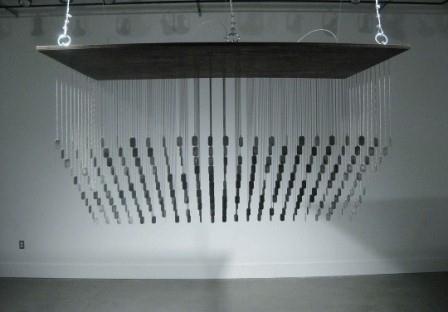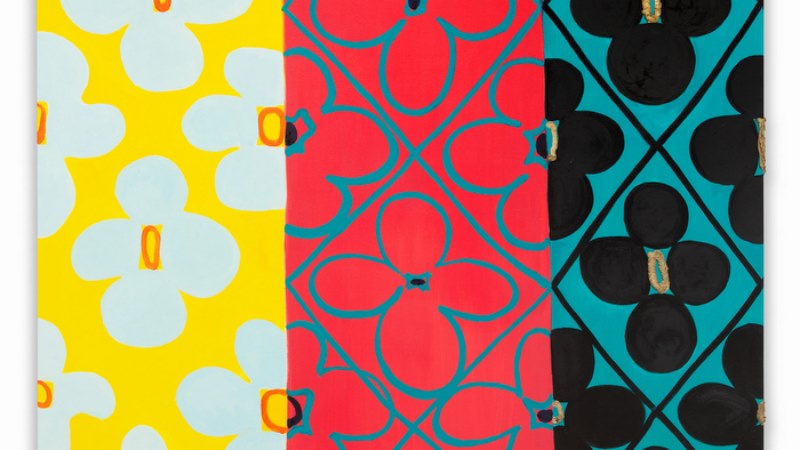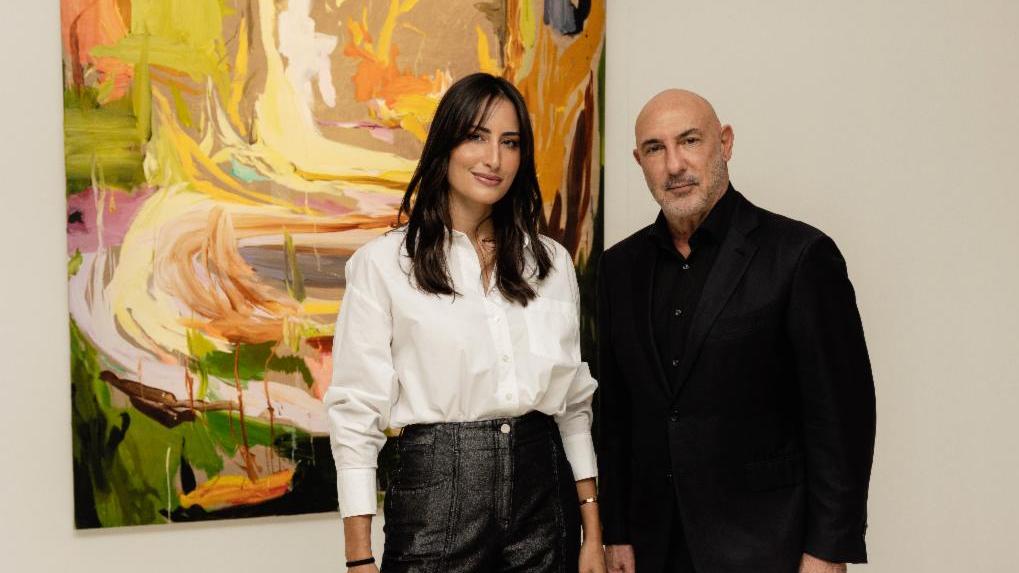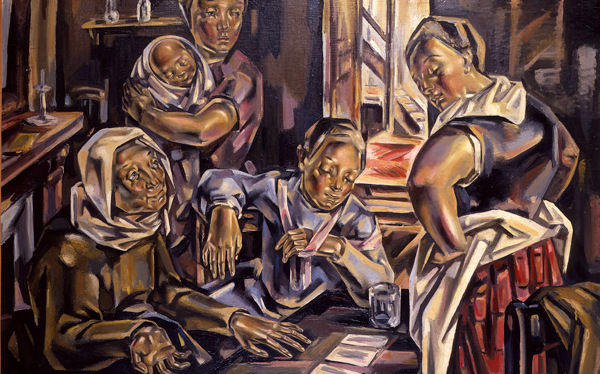By: Stacey Nguyen
In San Francisco’s Museum of Craft and Design, rows of dangling silver dog tags hang from a wooden slab like bead drops on a chandelier. On the dog tags read chilling phrases such as, “Please don’t tell me this was for nothing.” The piece is Teri McCans’ aptly named “Faith in Myself, Faith in My Leadership, Faith in the Oath I Swore for my Country.”
In cases of trauma, how do people grapple with the meaning of their experiences? For veteran artists featured at the Museum of Craft and Design’s exhibition, “Art and Other Contemporary Tactics: Contemporary Craft by Artist Veterans,” it is through craft. “Art and Other Contemporary Tactics” presents an intergenerational collection of works from artists who have served in World War II, Vietnam, Korea or more recent conflicts in the Middle East. Moving and honest, the exhibition reveals how veterans use art for understanding, healing and connecting.
During the Vietnam War, veteran Michael Aschenbrenner sustained a leg injury, and he spent almost a year in a hospital with mostly amputees. In his piece, “Damaged Bone Series #7,” bundles of matte and glossy glass bones hang on the wall. They are wrapped in a gauze-like material and erected by tree twigs. The gauze and branches reflect the practicalities of available material on the field. The glass material executes a metaphorical purpose, showcasing both the fragility and strength that war provokes.
For Aschenbrenner, crafting the bones was a process of discovery. “I did not even recognize them as bones until a fellow student at graduate school said, ‘Boy, they look like bones,’” Aschenbrenner noted in an interview with The Daily Californian. “It turns out I’d been having dreams about the whole thing.”
Aschenbrenner’s poignant series is a personal memorial for the Vietnam War. “It doesn’t glamorize war. This is really the reality of war,” he said. “You get hurt. And then you suffer either mental or physical pain the rest of your life.”
Other works in the exhibition reframe assumptions about service and war. Jessica Putnam-Phillips asks viewers to reconsider gender roles and the dichotomy between domesticity and military service in “Reflections,” a beautiful collection of glazed, hand-decorated plates. Putnam-Phillips, who previously served as an intelligence specialist in the Middle East, decorates pastel-colored plates with floral decorations and ornate gold finishes. In the middle of each plate are maroon ink drawings of women in military uniform carrying weapons. The work meditates upon issues that military servicewomen face, such as the need to prove their competence.
In his project, “Untitled Media Images,” Ash Kyrie enlarges an image of American soldier Bowe Bergdahl and pastes it onto an exhibition wall. Since last year, the American media has been closely following Bergdahl’s absence and capture by the Taliban after accusations of desertion emerged.
Feeling a disconnect between his experiences of war and mediated news images, Kyrie archived media images into three major categories: Benign intervention, abstract explosion and sacrifice. The Bergdahl picture belongs to the “Sacrifice” portion of Kyrie’s project. Partitioned by a white grid pattern, the piece is an augmented grayscale screenshot of Bergdahl from a “proof of life” video. It consists of Ben-Day dots, a method commonly used in print media.
Kyrie invites visitors to personally engage with his piece by tearing it down. The act of tearing down the picture serves as a haunting metaphor for the ambiguities inherent in a recontextualized image.
“We have a heavily mediated image already from the beginning, and that’s our knowledge as civilians of what the war reality is,” Kyrie said to the Daily Cal. “Every day we’re not seeing those images, we’re forgetting those images. This process helps people realize how ephemeral knowledge is, and how subjugated it is to mediated sources.”
“Art and Other Contemporary Tactics” illuminates both the destruction of war and the construction of artwork. It lies at the intersection between pain and possibility. Ultimately, it acknowledges the traumas of war while honoring craft as a tool of creative agency.
Art and Other Contemporary Tactics will be showing at Museum of Craft and Design in San Francisco until March 27.
Source: http://www.dailycal.org















